White Mountain Hearth Vent-Free Gas Stove Heater HRSQ25MVL-1 and HRSQ25MVN-1 User manual
- Category
- Stoves
- Type
- User manual
This manual is also suitable for

!
CAUTION —FOR YOUR SAFETY
•
Do not store or use gasoline or other flammable vapors and liquids in the vicinity of this or any
other appliance.
• WHAT TO DO IF YOU SMELL GAS:
• Do not try to light any appliance.
• Do not touch any electrical switch; do not use any phone in your building.
• Immediately call your gas supplier from a neighbor’s phone. Follow the gas supplier’s instructions.
•
If you cannot reach your gas supplier, call the fire department.
•
Installation and service must be performed by a qualified installed, service agency, or the gas supplier.
WARNING: If the information in this manual is not followed exactly, a fire or
explosion may result causing property damage, personal injury, or loss of life.
This appliance may be installed in an aftermarket, permanently located, manufactured (mobile)
home, where not prohibited by local codes. This appliance is only for use with the type gas
indicated on the rating plate. This appliance is not convertible for use with other gases.
INSTALLER: Leave this manual with the appliance.
CONSUMER: Retain this manual for future reference.
ANS Z21.11.2-2019
This appliance is equipped
for natural or propane
gas. Field conversion is
not permitted.
WARNING
HR2002VFS, 200415
This is an unvented gas-fired heater. It uses air (oxygen) from the room in which it is installed. Provisions
for adequate combustion and ventilation air must be provided. Refer to the AIR FOR COMBUSTION
AND VENTILATION section on page 8 of this manual.
Models:
HRSQ25MVL-1 / HRSQ25MVN-1
VENT-FREE
GAS STOVE HEATER
User’s Manual and Operating Instructions

2
Vent-Free Gas Stove User’s Manual
Table of Contents
Specifications ........................................................................................................................................................................................ 2
Safety Information ..............................................................................................................................................................................3
Product Identification ........................................................................................................................................................................ 6
General Preparation ...........................................................................................................................................................................7
Preparing for Installation ..................................................................................................................................................................8
Installation ............................................................................................................................................................................................11
*For Purpose of Input Adjustment
Specifications
Read this entire manual and all operating instructions before operating this heater.
IMPORTANT: Read all instructions and warnings carefully before starting installation. Failure to follow
these instructions may result in possible injury to persons or a fire hazard and will void the warranty.
Only a qualified installer, service agent, or local gas supplier may install and service this product.
WARNING
Log Placement .....................................................................................................................................................................................15
Operation ..............................................................................................................................................................................................19
Remote Control Operation .............................................................................................................................................................22
Care and Maintenance .....................................................................................................................................................................28
Troubleshooting Guide ....................................................................................................................................................................30
Parts List .................................................................................................................................................................................................33
Limited Warranty ...............................................................................................................................................................................35

3
Vent-Free Gas Stove User’s Manual
Safety Information
CARBON MONOXIDE POISONING: Early signs of carbon monoxide poisoning resemble
the flu with headaches, dizziness, or nausea. If you have these signs, the heater may
not be working properly. Get fresh air immediately, and have the heater serviced. Some people are more
aected by carbon monoxide than others: pregnant women, people with heart or lung disease, people
who are anemic, those under the influence of alcohol, and those living in high altitudes.
WARNING
NATURAL AND PROPANE GAS: Natural and propane gases are odorless. An odor-making agent is added
to the gas. The odor helps you detect a gas leak. However, the odor added to the gas can fade. Gas may
be present even though no odor exists. Make certain you read and understand all warnings. Keep this
manual for reference. It is your guide to operating this heater safely.
CALIFORNIA PROPOSITION 65: Fuels used in gas-fired heaters and the products of combustion of such
fuels contain chemicals known to the state of California to cause cancer, birth defects, or other reproductive
harm. This product contains chemicals, including lead and lead compounds, known to the state of
California to cause cancer, birth defects, or other reproductive harm. For more information go to
www.P65Warnings.ca.gov. Wash hands after handling.
WARNING:
•
Due to high temperatures, the heater should be located out of traffic and away from furniture and draperies.
•
The heater becomes very hot when operating. Children and adults should be alerted to the hazard of
high surface temperature and should stay away to avoid burns or clothing ignition. The heater will re-
main hot for a time after shuto.
• Allow surfaces to cool before touching.
• Young children should be carefully supervised when they are in the same room with the appliance.
•
Do not place clothing or other flammable material on or near the heater. Never place any objects in the
heater.
•
Installation and repair should be done by a qualified service person. The heater should be inspected
before use and at least annually by a professional service person. More frequent cleaning may be
required due to excessive lint from carpeting, bedding material, etc. It is imperative that control
compartments, burners, and circulating air passageways of the heater be kept clean.
• Any safety screen or guard removed for servicing an appliance must be replaced prior to operating the heater.
• Any change to this heater or its controls can be dangerous.
• Do not use any accessories not approved for use with this heater.
•
Keep the heater area clear and free from combustible materials, gasoline, and other flammable vapors
and liquids.
• This appliance is intended for supplemental heating.
WARNING
FIRE, EXPOLSION, AND ASPHYXIATION HAZARD
Improper adjustment, alteration, service, maintenance, or installation of this heater or its controls
can cause death or serious injury.
Read the following instructions and precautions in User's Information Manual provided with this
heater.
WARNING

4
Vent-Free Gas Stove User’s Manual
Safety Information (cont.)
WARNING:
• This heater must only be used with the type of gas indicated on the rating label. This heater is not
convertible for use with other gases.
• Do not place propane supply tank(s) inside any structure. Place propane supply tank(s) outdoors.
• If you smell gas, do the following:
• Shut off the gas supply;
• Do not try to light any appliance;
• Do not touch any electrical switch, and do not use any phone in your building;
• Immediately call your gas supplier from a neighbor’s phone. Follow the gas supplier’s instructions. If
you cannot reach your gas supplier, contact the fire department.
• Before using furniture polish, wax, carpet cleaner, or similar products, turn the heater o. If heated, the
vapors from these products may create a white powder residue within the burner box or on adjacent
walls or furniture.
• This heater must never be installed in a bedroom or bathroom.
• This heater needs fresh air ventilation to run properly and safely. This heater has an Oxygen Depletion
Sensing (ODS) safety shutoff system. The ODS shuts down the heater if not enough fresh air is
available. See AIR FOR COMBUSTION AND VENTILATION, page 8. If the heater keeps shutting o, see
the TROUBLESHOOTING GUIDE, page 30.
• Do not run the heater:
• Where flammable liquids or vapors are used or stored;
• Under dusty conditions.
• Do not use this heater to cook food or burn anything.
• Do not use the heater if any part has been under water. Before use, call a qualified service technician to
inspect the heater and replace any part of the control system and/or gas control that has been under
water.
• Turn off and let the heater cool before servicing. Only a qualified service person should service and repair
the heater.
• Operating the heater above elevations of 4,500 feet may cause pilot outage.
• To prevent performance problems, do not use propane fuel tank of less than 100 lb. capacity.
• Provide adequate clearances around air openings.
Make Owners Aware of Proper Stove Operation Log Placement
Properly installed and properly maintained stove heater do not deposit soot on the logs. If users see soot
on a log, they should call for service. Do not continue to operate the stove heater.

5
Vent-Free Gas Stove User’s Manual
Before beginning assembly or operation of this heater, ensure all parts are present. Check the parts against
the package contents list. If any part is missing or damaged, do not attempt to assemble, install, or operate
the heater. Contact customer service for replacement parts.
Estimated Assembly Time: 1 to 2 hours
Tools Required for Assembly (not included, unless otherwise stated):
Before installing the heater, ensure you have the following:
• Hardware package (included)
• Approved flexible gas hose if allowed by local codes
• Sealant (resistant to natural or propane gas)
• Electric drill with 3/16" drill bit
• Phillips screwdriver
• External regulator (supplied by installer if required)
• Piping (check local codes)
• Equipment shutoff valve
• Test gauge connection
• Sediment trap
• Tee joint
• Pipe wrench
• 3/8" NPT to 3/8" flare fitting
QUALIFIED INSTALLING AGENCY: Only a qualified agency should install and replace gas piping, gas
utilization equipment, or accessories, and/or repair and service such equipment. “Qualified agency” means
any entity that either in person or through a representative is engaged in and is responsible for:
• Installing, testing, or replacing gas piping; or
• Connecting, installing, testing, repairing, or servicing equipment; is experienced in such work; is familiar with
all precautions required; and has complied with all the requirements of the authority having jurisdiction.
Safety Information (cont.)
UNPACKING
1. Remove Stove and Stove Legs from the carton.
2. Remove all protective packaging used on the Stove. Check below the Stove for Stove Leg packaging.
3. Inspect the items for shipping damage. If you notice any damage, contact the dealer where the Stove
was purchased.
Failure to position the parts in accordance with these diagrams or
failure to use only parts specifically approved with this heater may
result in property damage or personal injury.
WARNING

6
Vent-Free Gas Stove User’s Manual
Product Identification
SAFETY PILOT
This heater has a pilot with an Oxygen Depletion Sensing (ODS) safety shutoff system. The ODS/pilot shuts
off the heater if there is not enough fresh air and cuts off the main burner gas in the event of flame out.
LEG KIT
Four (4) support legs and twelve (12) support leg screws are included with Stove. See page 14.
Optional FAN KIT
The fan has 3 settings (ON/OFF/Auto) which helps to distribute the warmed air into the space more rapidly.
NOTE: This is an optional accessory and is not required for operation of the heater.
Models:
HRSQ25MVL-1 / HRSQ25MVN-1

7
Vent-Free Gas Stove User’s Manual
General Preparation
LOCAL CODES
Install and use the heater with care. Follow all local codes. The installation must conform with local codes or,
In the absence of local codes, with the latest edition of The National Fuel Gas Code, ANS Z223.1/NFPA 54*.
This heater is designed for vent-free operation. State and local codes in some areas prohibit the use of vent-
free heaters.
*Available from:
American National Standard Institute, Inc.
1430 Broadway
New York, NY 10018
National Fire Protection Association, Inc.
1 Batterymarch Park
Quincy, MA 02269-9101
State of Massachusetts: The installation must be made by a licensed plumber or gas fitter in the
Commonwealth of Massachusetts. Sellers of unvented propane or natural gas-fired supplemental
room heaters shall provide to each purchaser a copy of 527 CMR 30 upon sale of the unit.
In the State of Massachusetts, unvented propane or natural gas-fired space heaters are prohibited
in bedrooms and bathrooms.
The installation of appliances designed for manufactured home (U.S. only) or mobile home installation
must conform with the Standard CAN/CSA Z240 MH, Mobile Housing, in Canada, or with the Manufactured
Home Construction and Safety Standard, Title 24 CFR, Part 3280, in the United States, or when such a
standard is not applicable, ANS/NCSBCS A225.1/NFPA 501A, Manufactured Home Installations Standard.

8
Vent-Free Gas Stove User’s Manual
Preparing for Installation
WATER VAPOR IS A BY-PRODUCT OF UNVENTED ROOM HEATERS
Gas combustion creates water vapor as a by-product. Unvented room heaters create about one (1) ounce (30
ml) of water for every 1,000 BTUs (0.3 kW) of gas input per hour. An unvented room heater is recommended
as a supplemental heat source for a single room rather than as a primary heat source for an entire house. The
water vapor does not typically create a problem. In most cases, the water vapor enhances the low humidity
conditions that are typical of cold weather.
Keep these points in mind so that the water vapor does not create a problem:
• The heater must be the proper size for the application. Provide adequate combustion air and circulation air.
• In humid environments, use a dehumidifier to help lower the amount of water vapor in the air.
• Do not use an unvented room heater as your primary heat source.
AIR FOR COMBUSTION AND VENTILATION
This heater shall not be installed in a room or space unless the required volume of indoor combustion air is
provided by the method described in the National Fuel Gas Code, ANS Z223.1/NFPA 54, the International Fuel
Gas Code, or applicable local codes.
PRODUCING ADEQUATE VENTILATION
Spaces in homes can be divided into these ventilation classifications:
• Unusually Tight Construction
• Unconfined Space
• Confined Space
The information on pages 8–10 will help you classify your space and provide adequate ventilation.
Confined and Unconfined Space:
A confined space has a volume less than 50 cu. ft. per 1,000 BTU/hr (4.8 m
3
per kW) of the total input rating
of all appliances installed in that space. An unconfined space has a volume not less than 50 cu. ft. per
1,000 BTU/hr (4.8 m
3
per kW) of the total input rating of all appliances installed in that space. Rooms that
are directly connected to the space in which the appliances are installed*, through openings that do not
have doors, are considered a part of the unconfined space.
Do not install this heater in a confined space or unusually tight construction unless you provide
provisions for adequate combustion and ventilation air.
*Adjoining rooms are directly connected only if there are doorless passageways or ventilation grills between them.
Unusually Tight Construction:
Doors and windows may leak air that provides enough fresh air for combustion and ventilation. However,
you must provide additional fresh air in buildings of unusually tight construction. Unusually tight
construction is defined as construction that meets the following criteria:
A. Walls and ceilings exposed to the outside atmosphere have a continuous water vapor retarder with a
rating of one perm or less with openings that are gasketed or sealed.
B. Doors and windows that can be opened have weather stripping.
C. Caulking or sealants are applied to areas such as joints around window and door frames; between sole
plates and floors; between wall-ceiling joints; between wall panels; at penetrations for plumbing,
electrical, and gas lines; and at other openings.
If your residence meets all the above criteria, additional fresh air must be provided. See VENTILATION AIR
FROM OUTDOORS on page 10 for more information. If your residence does not meet those three criteria,
continue to DETERMINING FRESH-AIR FLOW FOR THE HEATER LOCATION.

9
Vent-Free Gas Stove User’s Manual
Preparing for Installation (cont.)
DETERMINING FRESH-AIR FLOW FOR THE HEATER LOCATION
Determining if You Have a Confined or Unconfined Space:
Use the below information to determine if you have a confined or unconfined space. Your space includes
the room in which you will install the heater plus any other rooms that are directly connected and have
doorless passageways or ventilation grills between the rooms.
1. Determine the volume of the space. Length × Width × Height = cu. ft. (volume of space)
• Example: 20 ft. (length) × 16 ft. (width) × 8 ft. (ceiling height) = 2560 cu. ft. (volume of space)
If additional ventilation to adjoining room(s) is supplied with grills or openings, add the volume of these
rooms to the total volume of your space.
2. Divide the space’s volume by 50 cu. ft. to determine the maximum BTU/hr the space can support.
_______ (volume of space) ÷ 50 cu. ft. = (maximum BTU/hr the space can support)
• Example: 2560 cu. ft. (volume of space) ÷ 50 cu. ft. = 51.2 or 51,200 (maximum BTU/hr the space can support)
3. Add the BTU/hr of all fuel burning appliances in the space:
Example:
Gas heater __________BTU/hr Gas water heater 40,000 BTU/hr
Other gas appliances*+ ____BTU/hr Vent-free heater + 30,000 BTU/hr
Total = ____BTU/hr Total = 70,000 BTU/hr
*Do not include direct-vent gas appliances. Direct-vent appliances draw combustion air from outdoors
and vent to the outdoors.
4. Compare the maximum BTU/hr the space can support with the actual amount of BTU/hr used:
_______ BTU/hr (maximum the space can support)
_______ BTU/hr (actual amount of BTU/hr used).
•
Example : 51,200 BTU/hr (maximum the space can support) 70,000 BTU/hr (actual amount of BTU/hr used)
The space in the above example is a confined space because the actual BTU/hr used is more than the
maximum BTU/hr the space can support. You must provide additional fresh air. Your options are as follows:
A. Add the space of an adjoining room and rework the above information. If the extra space creates an
unconfined space, remove the door to the adjoining room or add ventilation grills between rooms.
See VENTILATION AIR FROM INSIDE A BUILDING, page 10.
B. Vent the room directly to the outdoors. See VENTILATION AIR FROM OUTDOORS, page 10.
C. Install a heater that uses less BTUs/hr if the lower BTUs/hr creates an unconfined space. If the actual BTU/
hr used is less than the maximum BTU/hr the space can support, the space is an unconfined space. In
this case, no additional fresh air ventilation is needed.

©2017 Pinnacle Climate Technologies
10
Preparing for Installation (cont.)
If the area in where the heater operates does not meet the required volume for
indoor combustion air, you must provide combustion and ventilation air by one of the
methods described in the NATIONAL FUEL GAS CODE, ANS Z223.1/NFPA 54, the INTERNATIONAL FUEL GAS
CODE, or applicable local codes.
WARNING
VENTILATION AIR FROM INSIDE A BUILDING
Fresh air comes from a connected unconfined space.
You must provide two permanent openings when
ventilating to a connected unconfined space, one of
which that’s within 12" of the wall that connects the
two spaces (see options 1 and 2, Fig. 1). You may also
remove the door into the adjoining room (see option 3,
Fig. 1). Follow the National Fuel Gas Code NFPA 54/ANS
Z223.1 for the required size of ventilation grills or ducts.
VENTILATION AIR FROM OUTDOORS
Extra fresh air is provided via ventilation grills or
ducts. You must provide two permanent openings:
one within 12" of the ceiling and one within 12" of the
floor (see Fig. 2). They must connect directly to the
outdoors or spaces that open to the outdoors. Such
spaces may include attics or crawl spaces. Follow the
National Fuel Gas Code NFPA 54/ANS Z223.1 for the
required size of ventilation grills or ducts.
IMPORTANT: Do not provide openings for inlet or
outlet air into an attic if the attic has a thermostat-
controlled power vent. The power vent will be
activated by heated air that enters the attic. You must
add the space of the connected unconfined space
and rework the information on page 9. The combined
spaces must have enough fresh air to supply all
appliances in both spaces.
12 in.
Ventilation Grills
Into adjoining Room
Option 2
Or
Remove
Door
Into
Adjoining
Room
Option 3
Ventilation
Grills
Into Adjoining
Room
Option 1
To
Attic
To
Crawl
Space
Outlet
Air
Ventilated
Crawl Space
Ventilated
Attic
Inlet Air
Inlet
Air
Outlet
Air
12 in.
Ventilation Grills
Into adjoining Room
Option 2
Or
Remove
Door
Into
Adjoining
Room
Option 3
Ventilation
Grills
Into Adjoining
Room
Option 1
To
Attic
To
Crawl
Space
Outlet
Air
Ventilated
Crawl Space
Ventilated
Attic
Inlet Air
Inlet
Air
Outlet
Air
Fig. 1—Ventilation Air from Inside a Building
Fig. 2—Ventilation Air from Outdoors
Vent-Free Gas Stove User’s Manual

11
Vent-Free Gas Stove User’s Manual
NOTICE: This heater is intended to be used as a supplemental heating source. Use this heater along with
your primary heating system. This heater must not be used as a primary heat source. If you have a central
heating system, you may run that system’s circulating blower while using this heater. This helps to circulate
the heat around your house.
IMPORTANT: Vent-free heaters add moisture to the air, which is beneficial. However, if this heater is
installed in areas without adequate ventilation, mildew may form from too much moisture in the air. See
AIR FOR COMBUSTION AND VENTILATION, pages 8 through 10.
CHECK GAS TYPE: Be sure your gas supply is right for your heater. If the supply is not correct, do not install
the heater. Contact the place where this heater was purchased for a heater appropriate for your gas supply.
NOTICE: State or local codes may only allow operation of this appliance in a vented configuration.
Check your state or local codes.
Installation
A qualified technician must install the heater. Follow all local codes.
Never install the heater in a bedroom or bathroom; in a recreational vehicle; where
curtains, furniture, clothing, or other flammable objects are less than 36" from the
front, top, or sides of the heater; in high traffic areas; or in windy or drafty areas.
WARNING
This heater creates warm air currents. These currents move heat to wall surfaces that
are next to the heater. Installing the heater next to vinyl or cloth wall coverings, or
operating the appliance where impurities in the air exist (tobacco smoke, aromatic candles, cleaning
fluids, oil or kerosene lamps, etc.), may cause walls to discolor.
CAUTION
WARNING

12
Vent-Free Gas Stove User’s Manual
Installation (cont.)
HEATER CLEARANCES
For convenience and efficiency, install the heater with these points in mind:
• Provide easy access for operation, inspection and service.
• Install the heater in the coldest part of the room.
If this heater is installed directly on carpeting, tile, or other combustible material, other than wood flooring,
the heater must be installed on a metal or wood panel that extends the heater’s full width and depth.
Clearances to Combustibles:
Carefully follow the instructions below. This stove is designed to set on the floor using the support legs.
If you install the heater in a home garage, a.) ensure the heater pilot and burner are at
least 18" above the floor and, b.) locate the heater where moving vehicles will not hit it.
CAUTION
Fig. 3— Clearances as Viewed from the Front of the Heater (Inches)
Minimum Clearance to Combustibles
*Left / Right Top Bottom Front Rear
12 in. 48 in. 0 in. 36 in.
2 in.
Top clearance is from the top of the heater to the ceiling, wood shelf, or other combustible material.
Bottom clearance is from the bottom of the heater to the surface of carpet, tile, or other combustible material.
*A second side wall must be at least 18 in. away from the other side of the heater. Always maintain a
minimum of 36 in. clearance from furniture and draperies.
*For the installation in residential garages, refer to the CAUTION statement above.
Maintain the minimum clearances shown in (see Fig. 3). If you can, provide greater
clearances from floor, ceiling and joining wall.
WARNING
2" Minimum
from Back
Wall

13
Vent-Free Gas Stove User’s Manual
Installation (cont.)
I
NSTALLING THE BLOWER (OPTIONAL, Model HAQBLR)
1.
NOTE: Ensure the rocker switch is positioned in the upper left
corner. (see Fig. 6b).
This blower is equipped with manual AUTO/OFF/MAN switch
(see Fig. 7). AUTO allows blower to automatically come on and
off. MAN allows the blower to run continuously.
NOTE: If any of the original wire supplied with the heater must be
replaced, a wire of at least an equal temperature rating must be
used. Refer to Fig. 8 for the wiring diagram.
Electrical grounding instructions: This appliance is
equipped with a three-prong (grounding) plug for
your protection against shock hazard and should be plugged directly into
a properly grounded three-prong receptacle (See Fig. 4).
WARNING
Fig. 5—Blower Panel
Fig. 6b—Attaching the Blower
Fig. 4—Grounded Three-
Prong Receptacle
Label all wires prior to disconnection when servicing controls. Wiring errors can cause
improper and dangerous operation. Verify proper operation after servicing.
CAUTION
Fig. 7—Operating the Blower
Do not use a blower insert, heat exchanger insert or
other accessory not approved for use with this heater.
Rocker
Switch
Grounded
Three-Prong
Receptacle
Disconnect the stove heater from the gas supply before installing
the blower accessory. Contact a qualified service person to do this.
Remove the blower cover plate using a screwdriver (see Fig.
5). Save the screws for attaching the Blower
WARNING
2.
Attach the blower air housing to the inside baffle panel using
the screws provided. (See Fig. 6a).
3
Attach the blower to the rear panel of the stove heater using
the eight screws removed earlier. (See Fig. 6b).
4. Plug the power cord into a properly grounded three-prong
receptacle (see Fig. 4).
Fig. 6a—Attaching Air Housing
Fig. 8—Blower Wiring Diagram

14
Vent-Free Gas Stove User’s Manual
POSITIONING THE HEATER
This heater sets on the floor by using the Support Legs included. For convenience and efficiency, install
the heater as follows:
• In a location with easy access for operation, inspection, and service.
• In the coldest part of the room.
• A minimum of 3' (36") away from furniture and draperies.
FLOOR MOUNTING
Before installing the Support Legs to the heater base, ensure you have the following items:
• (4) Support Legs
• (12) Support Leg Screws
1. To prevent scratching, place a blanket on the floor where the heater will be placed for leg
installation.
2. Place the top of the heater on the floor.
3. Fasten the Support Legs to the heater using the Support Leg Screws (Fig. 9)
NOTE: If installing the heater directly on carpeting, tile, or other combustible material, other than wood
flooring, the heater must be installed on a metal or wood panel extending the heater’s full width and
depth.
Installation (cont.)
Fig. 9—Attaching the Legs

15
Vent-Free Gas Stove User’s Manual
Log Placement
Check to ensure that no yellow flame comes in
contact with any log, both after installation and
periodically afterwards. Set the heater to HIGH and check if yellow
flames come into contact with any log. If so, reposition the logs as
indicated in the below illustrations. Yellow flames coming into
contact with logs create unnecessary soot.
CAUTION
Install the logs exactly as indicated (see Fig. 10–11). Do not modify
the logs, and use only logs supplied with the heater. The logs are
numbered and correspond to the numbers listed below.
Number of Logs: 5
1.
Place log #1 on pins between burners
and log #2 and #3 on pins in front of burner.
2.
Place log #4 onto pins in log #1 and #2.
Fig. 10
Failure to position the parts in accordance with these diagrams or failure to use only parts
specifically approved with this heater may result in property damage or personal injury.
WARNING
Fig. 11
Place log #5 onto pins in log #1 and #3.
After installing the logs, attach screen by hooking the slots on
the ends of the screen on the pins in the sides of the stove.
Note, logs are not shown for clarity.
The positioning of the logs is critical to the safe and clean operation
of this heater. Sooting and other problems may result if the logs are
not properly and firmly positioned in the appliance.

16
Vent-Free Gas Stove User’s Manual
Installation (cont.)
CONNECTING TO A GAS SUPPLY
The installer must supply an external regulator for liquid propane. For natural gas, the gas supplier supplies
the external regulator. The external regulator reduces incoming gas pressure, and the pressure must be
reduced to between 11" and 14" of water column for propane and between 5" and 10.5" of water column
for natural gas. Heater regulator damage could occur if the pressure of the incoming gas is not reduced.
Install the external regulator with the vent pointing down as shown in Fig. 12. The purpose of pointing the
vent down is to protect it from freezing rain or sleet.
*The equipment shutoff valve can be purchased from your local home center store.
A qualified service technician must connect heater to gas supply. Follow all local codes.
WARNING
Never connect the heater directly to the gas supply. This heater requires an external
regulator (not supplied). The external regulator between the gas supply and heater
must be installed. Your gas supplier provides the external regulator for natural gas.
CAUTION
Never connect the heater to private/non-utility gas wells (commonly known as
wellhead gas).
WARNING
Equipment Shutoff Valve With
1/8" NPT Tap*
Approved
Flexible
Gas Line
or 1/2"
Black Pipe
3" Minimum
Sediment Trap
Propane From
External
Regulator (11"
W.C. to 14" W.C.
Pressure)
Natural
From Gas Meter
Fig. 13—Gas Connection
External
Regulator
with Vent
Pointing
Down
Propane
Supply
Tank
Fig. 12—Regulator Conversion
IMPORTANT: Install equipment shutoff valve in an accessible location. The equipment shutoff valve is for
turning on or shutting off the gas to the heater. Apply pipe joint sealant lightly to the male threads. This
prevents excess sealant from going into the pipe. The heater valves may become clogged if excess
sealant gets into the pipes.
Use only new black iron or steel pipe. Internally tinned copper tubing may be used
in certain areas, depending on your local codes. Use pipe of 1/2" diameter or greater
to allow proper volume gas to heater. If the pipe is too small, loss of pressure will occur. Installation must
include an equipment shutoff valve, union, and plugged 1/8" NPT tap. The NPT tap must be located
within reach for the test gauge hook up and be upstream from heater (see Fig. 13).
CAUTION
Pipe Nipple Cap Tee Joint
(5" W.C. to
10.5" W.C. Pressure)

17
Vent-Free Gas Stove User’s Manual
Installation (cont.)
Use pipe joint sealant that is resistant to gas (propane or NG). We recommend that you
install a sediment trap in a supply line, which traps moisture and contaminants. The
sediment trap should be located within reach for cleaning and where it is not likely to freeze. Install it in the
piping system between the fuel supply and heater. This keeps contaminants from getting into the heater
controls. The heater may not run properly if the sediment trap is not installed or is installed incorrectly.
CAUTION
Avoid damage to the regulator. Hold the gas regulator with a wrench when connecting
into gas piping and/or fittings. NG Models: 6" to 7" W.C. (B-Series) / 5" to 11" W.C.
(R-Series). Your gas supplier provides an external regulator for natural gas.
CAUTION
INSTALLATION ITEMS NEEDED (NOT PROVIDED):
• 8" Adjustable Wrench
• 8" Pipe Wrench
• 3/8" Flexible Gas Line (24" Min.) or 1/2" Black Pipe
• 90 Deg. 3/8 NPT x 3/8" Flare Fitting or 3/8" Street Elbow
• Sealant (Resistant to natural or propane gas)
• Shutoff Valve
1. Depending on where your gas supply line is located, a variety of options are possible for routing the gas
connection lines. First, install the 3/8" fitting to the heater regulator using sealant. Direct the attachment
either left or right toward the gas supply line.
NOTICE: Most building codes do not permit concealed gas connections. Check your local building
code before using a flexible gas line for this installation.
2. Install the gas line to the 90 deg. fitting, and attach it to the shutoff valve (see Fig. 14 & 15). Depending on
your connection, it might be necessary to cut and access the hole in the side or bottom of the mantel cabinet.
3. Check all connections for gas leaks.
Fig. 14—Gas Inlet to Regulator
Fig. 15—Attaching the Flexible Gas Line
to the Equipment Shutoff Valve
Flexible Gas Line or
Black Pipe to Heater
Cabinet Regulator
To Regulator
EQUIPMENT
SHUTOFF
VALVE
PROPANE
To External Regulator
NATURAL GAS
To Gas Supply

18
Vent-Free Gas Stove User’s Manual
Installation (cont.)
CHECKING GAS CONNECTIONS
Pressure Testing Gas Supply Piping System
Test Pressures in Excess Of 1/2 PSIG (3.5 kPa):
1.
Disconnect the heater, including the main gas valve (control valve) and equipment shutoff valve, from
the gas supply piping system. Pressures greater than 1/2 PSIG will damage the regulator.
2.
Cap off the open end of the gas pipe where the equipment shutoff valve was connected.
3. Open the gas supply tank valve or use compressed air to pressurize the supply piping system.
4. Check all joints of the gas supply piping system. Use a mixture of liquid soap and water in the gas joints
to check for leaks—bubbles may indicate a leak.
5. Immediately correct all leaks.
6.
Reconnect the heater and equipment shutoff valve to gas supply. Check reconnected fittings or leaks.
Test Pressures Equal To or Less Than 1/2 PSIG (3.5 kPa):
1.
Close the equipment shutoff valve (see Fig. 16).
2. Open the gas supply tank valve or use compressed air to pressurize the supply piping system.
3.
Check all joints from the gas meter to the equipment shutoff valve (see Fig. 16.1 & 16.2).
4. Use a mixture of liquid soap and water in the gas joints to check for leaks—bubbles may indicate a leak.
5. Immediately correct all leaks.
Pressure Testing Heater Gas Connections:
1.
Open the equipment shutoff valve (see Fig. 16).
2. Open the gas supply tank valve.
3. Ensure the control knob of the heater is in the OFF position.
4.
Check all joints from the equipment shutoff valve to the control
valve (see Fig. 16
.1 & 16.2). Use a mixture of liquid soap and water
in the gas join
ts t
o check f
or leaks—bubbles ma
y indica
t
e a leak
.
5. Light the heater (see OPERATION, pages 20–22). Check all other
internal joints for leaks.
6.
Turn off the heater (see TO TURN OF
F GAS
TO
THE
HEATER
,
pages 21–22).
After installing or servicing the heater, test all gas piping and connections for leaks.
Immediately correct all leaks.
WARNING
Never use an open flame to check for a leak. Apply a mixture of liquid soap and water
to all joints—bubbles may indicate a leak. Immediately correct all leaks.
WARNING
Equipment
Shuto
Valve
Open
Closed
Fig. 16—Equipment
Shutoff Valve
Equipment
Shuto
Valve
Propane
Supply
Tank
Gas Control Valve
(Behind)
Fig. 16.1—Checking Gas Joints (Propane Only)
Gas Control Valve
(Behind)
Equipment
Shutoff Valve
Gas Meter
Fig. 16.2—Checking Gas Joints (Natural Gas Only)

19
Operation
FOR YOUR SAFETY READ BEFORE LIGHTING
A. This appliance has a pilot that must be lighted by the piezo ignitor. When lighting the pilot, follow these
instructions exactly.
B. BEFORE LIGHTING, smell all around the appliance area for gas. Be sure to smell next to the floor because
some gas is heavier than air and will settle on the floor.
WHAT TO DO IF YOU SMELL GAS:
• Do not try to light any appliance.
• Do not touch any electric switch; do not use any phone in your building.
• Immediately call your gas supplier from a neighbor’s phone. Follow the gas supplier’s instructions.
• If you cannot reach your gas supplier, call the fire department.
C. Push in or turn the gas control knob using only your hand. Never use tools. If the knob will not push in
or turn by hand, do not try to repair it; call a qualified service technician. Force or attempted repair
may result in a fire or explosion.
D. Do not use this room heater if any part has been under water. Immediately call a qualified service
technician to inspect the room heater and to replace any part of the control system and any gas control
which has been under water.
Vent-Free Gas Stove User’s Manual
Vent-Free Gas Stove User’s Manual
If you do not follow these instructions exactly, a fire or explosion may
result causing property damage, personal injury or loss of life.
WARNING

20
LIGHTING INSTRUCTIONS
1. STOP! Read all the above safety information before proceeding.
2.
Set the receiver switch to the “ON” position* (see Fig. 17) and
set the thermostat to the lowest setting.
Open the lower access panel located below the heater screen.
4. to the “OFF” position Turn the control knob clockwise
(see Fig. 17).
5. Wait five (5) minutes to clear out any gas. Then smell for gas,
including near the floor. If you smell gas, STOP! Follow “B” in
the safety information above. If you don’t smell gas, go to the
next step.
6.
Push in slightly and turn the control knob counterclockwise
to the “PILOT” position (see Fig. 17). Depress the control knob.
7. With the control knob depressed, push down on the
ignitor button until the pilot lights. The pilot is located behind
logs #2 and #3 near the center of the burner (see Fig. 18).
8. Keep the control knob depressed for (30) seconds after the
pilot lights. Release the control knob.
• If the control knob does not pop up when released, stop and
immediately call a qualified service technician or gas supplier.
• If the pilot goes out, repeat steps 3 through 7. Wait (1) minute
before attempting to light the pilot again. If after several tries
the pilot still goes out, turn the gas control knob clockwise
9. Turn the control knob counterclockwise to the “ON” position.
11.
T
o use the t
hermostatic remote control*, set the receiver switch to the “REMOTE”
position (see Fig. 17). Press the “ON” button to turn on the remote (Fig. 19) to
ignite the main burner. Refer to the remote control instruction manual on page 22
for the “MODE” and “SET” functions.
Fig. 17—Receiver
and Control Knob
Fig. 18—Pilot
Fig. 19—Remote/
Transmitter
The stove screen must be in place while the heater is in operation.
TO TURN OFF GAS TO THE HEATER
1. Set the thermostat to the lowest setting.
2. Press the “OFF” button on the remote control.
4. Push in slightly and turn the control knob clockwise to the “OFF” position.
WARNING
to the “OFF” position and call a qualified service technician.
Vent-Free Gas Stove User’s Manual
3.
3.
Open the lower access panel located below the heater screen.
5.
Close the lower access panel.
10.
Close the lower access panel.
*Included with select models only. Also available as an optional accessory.
Page is loading ...
Page is loading ...
Page is loading ...
Page is loading ...
Page is loading ...
Page is loading ...
Page is loading ...
Page is loading ...
Page is loading ...
Page is loading ...
Page is loading ...
Page is loading ...
Page is loading ...
Page is loading ...
Page is loading ...
Page is loading ...
-
 1
1
-
 2
2
-
 3
3
-
 4
4
-
 5
5
-
 6
6
-
 7
7
-
 8
8
-
 9
9
-
 10
10
-
 11
11
-
 12
12
-
 13
13
-
 14
14
-
 15
15
-
 16
16
-
 17
17
-
 18
18
-
 19
19
-
 20
20
-
 21
21
-
 22
22
-
 23
23
-
 24
24
-
 25
25
-
 26
26
-
 27
27
-
 28
28
-
 29
29
-
 30
30
-
 31
31
-
 32
32
-
 33
33
-
 34
34
-
 35
35
-
 36
36
White Mountain Hearth Vent-Free Gas Stove Heater HRSQ25MVL-1 and HRSQ25MVN-1 User manual
- Category
- Stoves
- Type
- User manual
- This manual is also suitable for
Ask a question and I''ll find the answer in the document
Finding information in a document is now easier with AI
Other documents
-
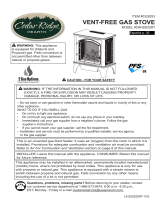 ProCom Heating CRHSD25RT User manual
ProCom Heating CRHSD25RT User manual
-
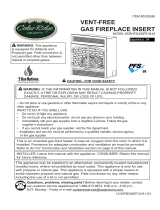 ProCom Heating CRHFD400RT-M-M User manual
ProCom Heating CRHFD400RT-M-M User manual
-
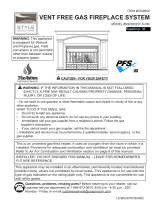 ProCom Heating MD300HGA User manual
ProCom Heating MD300HGA User manual
-
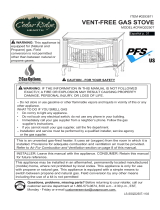 ProCom Heating CRHQD250T User manual
ProCom Heating CRHQD250T User manual
-
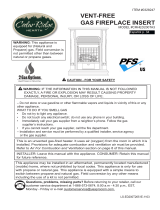 ProCom Heating CRHED200TA3 User manual
ProCom Heating CRHED200TA3 User manual
-
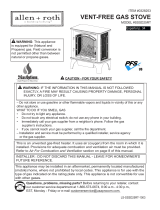 ProCom Heating CRHFD400RT-M-M User manual
ProCom Heating CRHFD400RT-M-M User manual
-
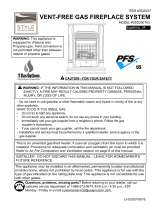 ProCom Heating SSD200TA3 User manual
ProCom Heating SSD200TA3 User manual
-
 ProCom Heating SSD200TA2 User manual
ProCom Heating SSD200TA2 User manual
-
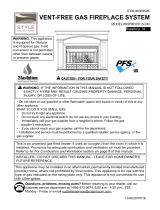 ProCom Heating SSFBD23T-5-CM User manual
ProCom Heating SSFBD23T-5-CM User manual
-
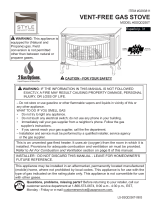 ProCom Heating SSQD250T User manual
ProCom Heating SSQD250T User manual













































